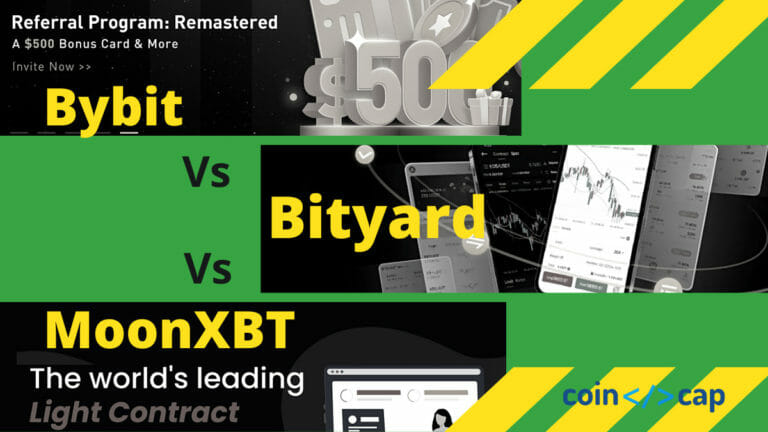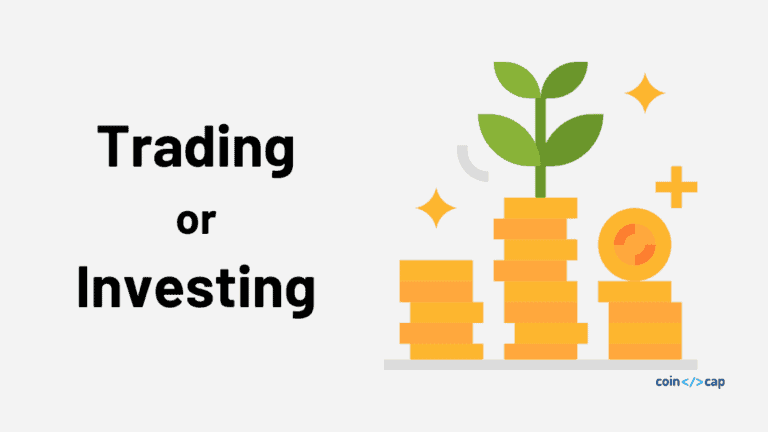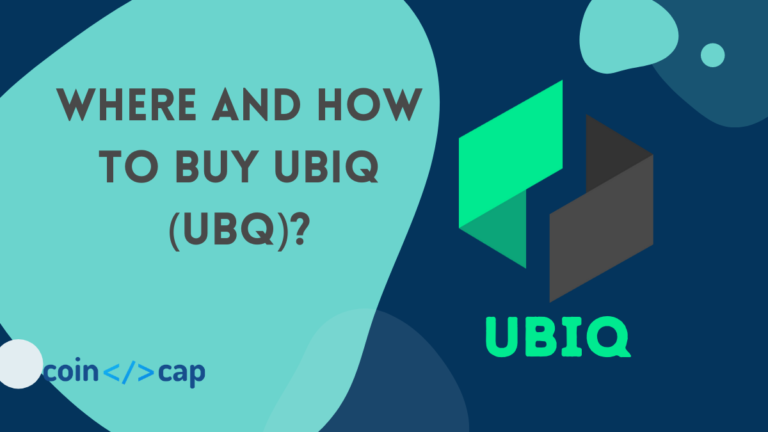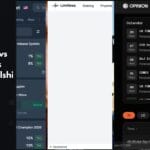There are times when people have a hard time understanding Margin Trading. So, in this article, we will try to explain What is Margin trading and how does Margin Trading works? We will go through some basic terms related to margin trading and also an outline of steps to begin margin trading on a crypto margin exchange.
Table of contents
- Summary (TL;DR)
- What is margin trading?
- How does margin trading work? (An example)
- Types of margin trading
- Margin trading in crypto
- Futures contract
- How to get started with margin trading?
- Margin trading vocabulary
- What is leverage?
- What is the collateral in margin trading?
- What is Long in margin trading, and how to go Long?
- What is Short in margin trading, and how to go Short?
- What is the Limit order in margin trading?
- What is the market order in margin trading?
- What is a demo in margin trading?
- What is the TP ratio?
- What is the SL ratio?
- What is floating P&L?
- What is equity?
- What is a margin call?
- What is maintenance margin?
- What is the ADL mechanism?
- What is hedging?
- Risks involved in margin trading
- Margin trading: Pros and Cons
- Conclusion
- Frequently Asked Questions
Summary (TL;DR)
- Margin trading is where a third party lends you funds for trading against your original capital.
- You can set leverage according to you and multiply your returns accordingly.
- In isolated margin trading, the exchange stores your funds of different positions in sub-accounts to prevent you from losing more than your capital for a particular position.
- Cross margin trading uses the parent margin account funds for all positions and prevents liquidations.
- You can do margin trading in cryptocurrency or else invest in futures contracts.
- You can use exchanges such as Binance, BYDFI, Bybit, etc., for margin trading.
- There are various terms such as equity, TP ratio, SL ratio, hedging, etc., which a margin trader should know.
- There is always an increased risk of liquidation in margin trading.
What is margin trading?
Crypto margin trading or margin trading allows you to trade with a higher capital on borrowed funds. A third party or an exchange lends you funds against your original capital as collateral. You decide your loan amount by choosing leverage.
Leverage allows you to multiply your capital within the accepted range of the exchange. We will again have a look at leverage at a later stage in the article.
How does margin trading work? (An example)
Suppose you apply for a 10x leverage on a platform, and you have 5 USDT as your original capital. When you open a position, the exchange will lend you an additional 45 USDT to invest in the market.
Now, if the price of an asset rises/ falls by 5%, then you will gain/ lose ( 5 x 10 = 50% ). Margin trading can convert your 5% profit/ loss to a 50% profit/ loss in no time. Hence it is considered highly profitable as well as highly risky to trade with margin.
Types of margin trading
Most of the platforms offer one of the two or both types of margin trading. Beginners usually prefer isolated margin, whereas cross-margin trading is more suited to professional traders.
Isolated margin trading
In isolated margin trading, your margin for all of the positions you open remains in separate sub-accounts. This benefits you in case of any liquidation, as you don’t have to suffer any further losses, and the funds of only that particular position are lost.
Isolated margin trading example
Let’s assume you have 100 USDT in your margin account. Now you open a position in the BTC market with a margin of 10 USDT and leverage of 10x. Now the price of BTC falls by 10%, and with a leverage of 10x, you incur a loss of 100%.
In that case, the exchange automatically sells all your assets in that position. Here, you don’t lose more than 10 USDT, as the exchange does not withdraw more funds from your main balance to cover up the losses.
Cross margin trading
In cross-margin trading, all of your positions have capital from your main margin account. Suppose you incur a loss in a position. In that case, the exchange can withdraw funds from your main balance to cover up the loss and prevent liquidation.
Cross margin trading example
Let’s assume you have 100 USDT in your margin account, and you open a position in BTC with 10 USDT and leverage of 50x. Now the price of BTC falls by 2.2%, and you suffer a loss of 110%.
Now, unlike isolated margin trading, the exchange will automatically increase the margin of your position to prevent liquidation. This might cost a more significant loss, but it keeps your position open.
Margin trading in crypto
Exchanges generally offer margin trading in cryptocurrencies. In almost all of the platforms, your crypto margin orders are placed in the spot market and executed accordingly.
You can go long and short on a range of crypto assets with your chosen leverage.
Futures contract
A futures contract allows you to sell or buy an asset at a predetermined price in the future. Almost all of the exchanges allow margin trading in futures markets, and they usually offer higher leverage than crypto assets. PrimeXBT provides a leverage of up to 1000x on futures.
How to get started with margin trading?
At times, it can be a tedious process to understand margin trading for a beginner. Hence, we have an outline of steps you can follow to begin margin trading at any exchange.
Note: These steps are generalized; hence if you do not find the use of an exact step at your chosen exchange, then try moving on to the next step.
Create an account
You can go through the following steps to create an account on any crypto exchange that provides margin trading.
- Go to the official website of the exchange and click on sign-up.
- Now, enter your email and password and then verify your email.
- In case the exchange requires you to complete KYC, visit the profile tab and click on complete KYC.
- Enter your personal information, upload all the documents, and verify your bank account.
Depositing funds
You need funds to open a position in any market, and you can follow these steps to deposit funds:
- Visit the wallet section from the header of the exchange.
- Now click on the deposit button across your preferred crypto asset or FIAT.
- You can do a bank transfer or NEFT for fiat, depending on the platform’s accepted methods.
- In the case of a digital currency, scan the QR code or transfer funds to your wallet address.
Opening and closing a Margin order
Now, you can follow these steps to open or close a position with margin:
- Visit the Crypto/ Futures/ Derivatives margin market tab, and choose the asset to invest in.
- Now, enter the amount you wish to invest.
- Now, choose the leverage, and click on the long/ green button to go long or short/ red button to go short.
- When you’ve decided to close the position, click on the close button.
Best platforms for crypto margin trading
There are many exchanges like Binance, BYDFI, PrimeXBT, etc., in the market offering margin trading services.
To know more, you can read our article on the top 5 crypto margin trading exchanges or the five best bitcoin margin trading exchanges.
Margin trading vocabulary
You will often come across terms/jargons/vocab while margin trading whose meaning you should know. Here are some of those terms for your assistance.
What is leverage?
Leverage determines your loan amount. Suppose you apply the leverage of 10x on 1 USDT. Then the platform will lend you 9 USDT with your initial 1 USDT as collateral, and you can open a position worth 10 USDT.
What is the collateral in margin trading?
When you open a position in margin trading, then the exchange holds your initial capital. The exchange uses this capital as collateral and covers its losses if your prediction goes sideways.
What is Long in margin trading, and how to go Long?
Going ‘Long’ means opening a position to predict an increase in the value of an asset. By going long, you buy an asset at a lower price and try to sell it at a higher price where the difference will be your profit.
You can go ‘Long’ by clicking on the long/ buy/ green button on the margin trading window.
What is Short in margin trading, and how to go Short?
By going ‘Short,’ you open a position to predict a decrement in an asset’s value. You buy the asset at a higher price and sell it at a lower cost to take the difference as a profit.
You can go ‘Short’ by clicking on the Short/ sell/ red button on the margin window.
What is the Limit order in margin trading?
A limit order allows you to place an order beforehand for the desired market price. The order executes when the market meets your order requirements.
What is the market order in margin trading?
A market order allows you to open a position in real-time. You can click on the Long/ Short button and open a position based on the present market values.
What is a demo in margin trading?
Some platforms offer ‘DEMO’ in the margin trading section such as Bybit. The demo allows you to place orders and close them without any capital, profit, or loss. It helps beginners study the market and understand how margin trading works.
What is the TP ratio?
Your TP ratio tells about the price you should close a position to make a positive return. You can enter your desired % profit or your desired profit in terms of USDT. TP ratio will give you the closing value to obtain that return.
What is the SL ratio?
Stop Loss or SL ratio tells you about the closing price of a trade beyond which you cannot bear a loss. You can quickly enter the amount or % to get the closing value of the particular position.
What is floating P&L?
Floating P&L tells you about your present profit or loss in an open position.
What is equity?
Equity tells you about your margin account’s total value, including your asset’s present market value in an open position.
What is a margin call?
When you start taking losses in your open position and liquidation is about to happen, then the exchange reaches out to you. They call you to add more funds in the open position to prevent liquidation.
What is closing time?
All exchanges close all open positions once a day and you need to open new positions. Keep in mind the closing time of the exchange you are using, as leaving an open position might cause you a loss.
What is maintenance margin?
After you open a position, you have to maintain a minimum amount in your margin account. As per FINRA, you have to keep a minimum of 25% of assets’ value in a margin account.
What is the ADL mechanism?
When you start losing your funds and reach the liquidation value, the ADL mechanism allows the exchange to sell your assets. It is to cover the exchange’s loss with effective leverage use.
What is hedging?
Hedging means holding a position in both directions as insurance of market fluctuation.
For example, let’s say you open a long position of 10 USDT in the BTC market at a leverage of 50x and price 58,000. Now, you can’t figure out what direction the market could move. So you open a short position of the same leverage and value.
If the market takes a jump in another direction, you can still make a return by closing the previous position.
Checkout, Pionex’s Spot-Futures arbitrage bot does the similar and provides you constant returns based on this strategy.
Risks involved in margin trading
Even though margin trading sounds nice, it has some very high potential risks. Some of them are below:
- The Crypto market is highly volatile, which can lead to significant returns as well as losses.
- The higher the leverage and the lower the capital, the lighter is the risk of liquidation.
- Never leave the screen with an open position, as the market can go sideways in the blink of an eye. Or use crypto trading bots.
- Since margin trading increases risk, hence only invest an amount you are ready to lose.
- Always keep in mind the closing time of all the positions at the exchange you are using.
Margin trading: Pros and Cons
| Pros | Cons |
|---|---|
| You can gain higher returns with small capital. | Higher risks with increased leverage. |
| You can choose your loan amount. | You can lose your entire capital with liquidation. |
| Margin trading teaches you risk management. | Some exchanges charge humongous interest rates and trading fees. |
| You can use hedging with smaller capital to minimize risk. |
Conclusion
Margin trading is trading on borrowed funds, and it can be a tedious job for beginners. You should always use top crypto margin exchanges because a glitch can make you lose your entire capital. However, with the correct information and experience, you can quickly gain returns on your trades. Margin trading can also be hazardous for noob traders, and they can incur significant losses. Therefore, if you want leverage without complex jargon, then try Leveraged Tokens.
Frequently Asked Questions
What happens if you lose a margin trade?
Suppose you do not answer the margin call or do not add more funds to a position. Then the exchange automatically sells all of your assets to cover its losses, and you lose your capital.
Why is trading on margin dangerous?
Since you are trading on borrowed funds, the exchange lending you funds wouldn’t suffer losses. Hence they keep your capital as collateral. As you increase the value of leverage, you increase your chances of liquidation.
Can I buy bitcoin on margin?
Bitcoin margin trading means buying bitcoin on credit. So even you buy bitcoins using leverage, you will have to close the position to gain a return. In case you make a profit, you can then use these funds to buy bitcoins.









